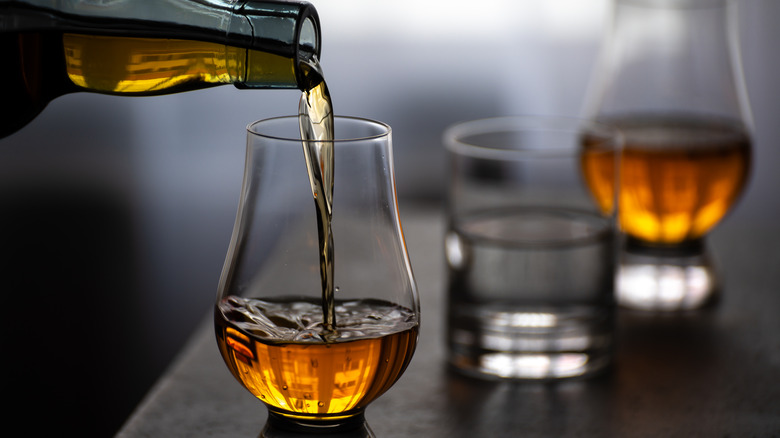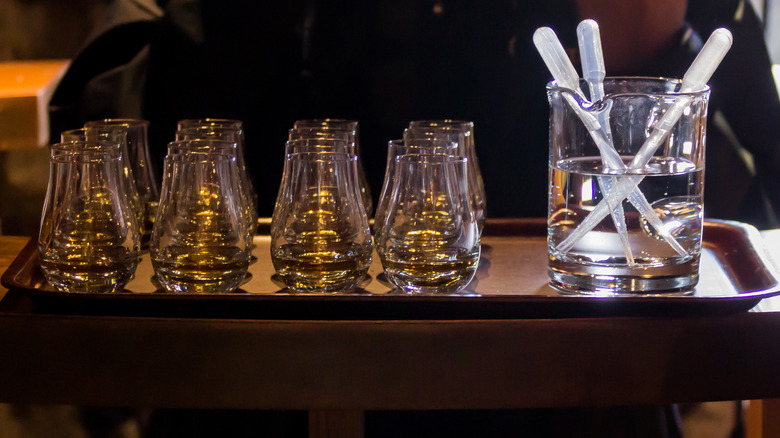Why A Few Drops Of Water Will Transform Your Bourbon Drinking Experience
While bourbon is a type of whiskey, its deep flavors interspersed with characteristic sweet notes make it relatively easy to distinguish from other whiskies. Even cheaper varieties of bourbon generally have a complex flavor profile because of the minimum two years they spend aging in a barrel. Some imbibers enjoy the intensity of drinking this spirit neat, and that's definitely one delicious way to enjoy bourbon. In fact, if you want to explore drinking it as-is, we suggest pairing bourbon or any other whiskey with a pickle juice chaser. However, to best experience its flavor profile, you should add a splash of water to your bourbon.
While you may have heard this tip before, we wanted to get to the bottom of why exactly adding water to bourbon works. Chris Blatner, an Executive Bourbon Steward and Founder of Urban Bourbonist, LLC, told us about the subtleties of the spirit and how it benefits from a few drops of water. Blatner is also Executive Director of Bourbon Charity and, as such, is deeply embedded in the community of bourbon aficionados. While which aspects of whiskey you find enjoyable is a matter of personal preference, understanding the mechanics of adding water to bourbon can help you appreciate it all the more. It can also lead you to the sweet spot of dilution that works best for your palate.
Water helps bring out bourbon's tasting notes
First things first: it's important to use neutral-tasting water when adding it to bourbon. Others, such as one that is fortified with minerals, can affect the taste. Furthermore, when diluting bourbon with water, a little goes a long way. "Even adding just a few drops of water can totally change the drinking experience of a whiskey," says Chris Blatner. "When water is added it can 'open up' the whiskey and allow some additional aromas and flavors to bloom."
Contrary to how it may appear in your glass, whiskey is not a completely homogenous liquid, as its two main components, water and ethanol, do not completely mix. Furthermore, many of the compounds responsible for flavor and aroma are attracted to alcohol. For instance, guaiacol, the aromatic oil from wood that gives whiskeys their characteristic flavor, tends to bunch up with ethanol molecules and avoids water molecules. Studies have shown that this is even more obvious with higher concentrations of ethanol (via Scientific Reports). Diluting helps release these flavorsome compounds and spreads them around, making it easier for you to experience them.
When diluting bourbon, you can use a dropper and add a few drops of water to keep things precise. If you're that focused on details, we also recommend studying the color of the bourbon before diluting to give more insight into the spirit. It's also worth noting that adding water also dilutes the mouthfeel of the whiskey. Try a few levels of dilution to find one that best balances your bourbon's flavor and texture.

